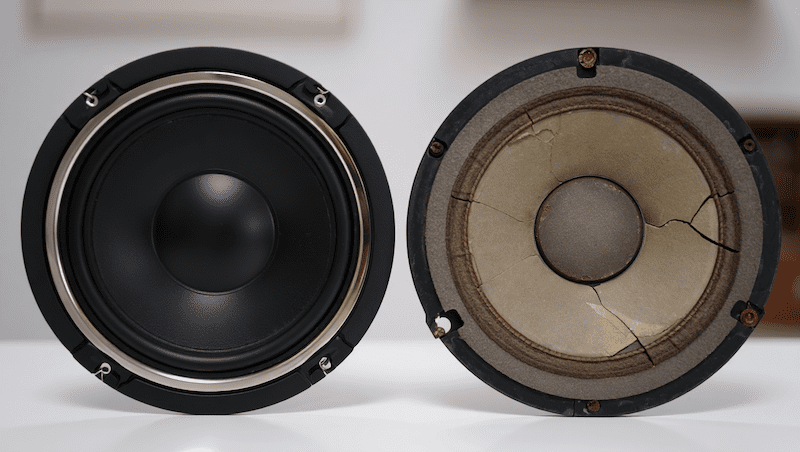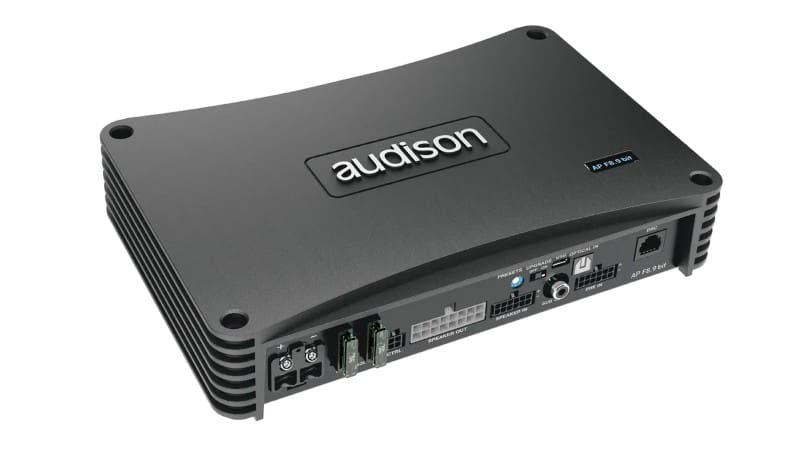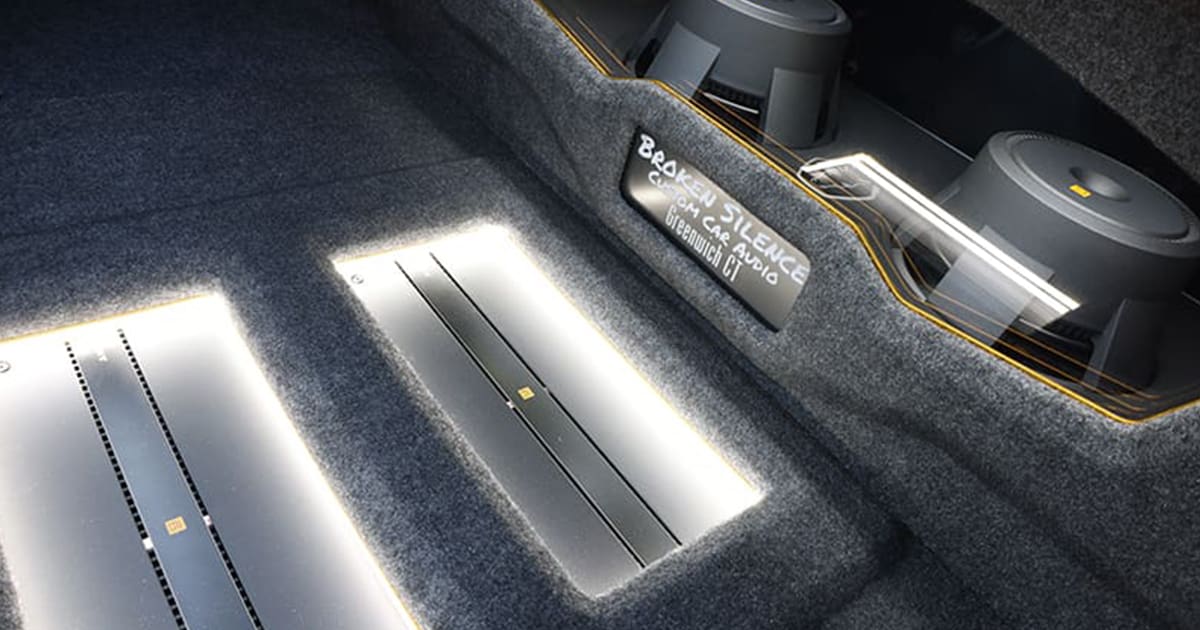A high-quality car audio system can make every drive more enjoyable, immersing you in rich, clear sound. However, many car owners unknowingly make mistakes that degrade sound quality, leading to weak bass, distorted highs, or an overall lackluster experience. Avoiding these common pitfalls ensures you get the most out of your investment in aftermarket audio equipment.
Below, we’ll break down five of the biggest mistakes people make with their car audio systems and explain how to fix them for optimal performance.

1. Ignoring Speaker Quality and Placement
Why It’s a Problem
The quality and placement of your speakers are two of the most critical factors affecting sound clarity and depth. Many factory-installed and budget aftermarket speakers use low-quality materials that wear out quickly and fail to reproduce music accurately. Additionally, poor speaker placement—such as tweeters positioned too low or subwoofers placed in restrictive enclosures—can distort stereo imaging, making your system sound unbalanced.
How to Fix It
Upgrading to high-quality speakers is one of the most effective ways to improve your car audio experience. Component speakers, which separate the tweeter and midrange drivers, offer better clarity and imaging than coaxial speakers. For proper placement, tweeters should be mounted at ear level whenever possible to provide a more natural soundstage.
For subwoofers, enclosure design plays a huge role in performance. The right box—whether sealed, ported, or bandpass—dramatically affects bass response. A professional installer can ensure optimal placement and secure mounting, reducing vibrations and maximizing audio quality.

2. Using the Wrong Amplifier or No Amplifier at All
Why It’s a Problem
Many factory head units and underpowered amplifiers fail to deliver the clean, dynamic power that aftermarket speakers and subwoofers need. Without a proper amplifier, your system may sound weak, struggle at higher volumes, or produce unwanted distortion. Worse, using an amplifier that doesn’t match your speakers’ power requirements can lead to underpowered or overdriven speakers, potentially causing damage.
How to Fix It
Choosing the right amplifier starts with matching power ratings correctly. Your amplifier’s RMS power output should closely match your speakers’ RMS power handling for optimal performance. Underpowering a speaker forces the amp to work harder, leading to distortion. Overpowering it beyond safe limits can blow the speaker.
A mono amplifier is the best choice for subwoofers, while a multi-channel amp works well for mids and highs. Class D amplifiers are highly efficient and ideal for subs, while Class AB amps provide excellent sound quality for midrange and high-frequency drivers. Properly setting gain and crossover settings ensures clean, distortion-free sound.
A professional audio specialist can help select and tune the right amplifier for your system, ensuring balanced and powerful performance.

3. Skipping Proper Sound Damping and Noise Reduction
Why It’s a Problem
Even the best car audio system can be ruined by excessive road noise, vibrations, and rattles. If you’ve ever turned up your stereo only to have the sound drowned out by wind, tire hum, or engine noise, you know the frustration. Vibrations in the door panels, dash, or trunk can also distort sound, making your system sound hollow or muddy.
How to Fix It
Applying sound-deadening materials dramatically improves audio clarity by reducing unwanted noise and vibrations. Products like Dynamat, HushMat, or Stinger Roadkill absorb vibrations and help keep outside noise from interfering with your music.
For doors, installing closed-cell foam or mass-loaded vinyl blocks additional sound from entering the cabin. Subwoofers and speakers should be mounted securely to avoid rattling and unwanted resonance.
For those who want a quieter, more immersive listening experience, professional installation ensures a thorough application of sound-deadening materials, providing the best results.

4. Relying on Factory Equalizer Settings or Poor Tuning
Why It’s a Problem
Your car’s acoustics are vastly different from a home audio setup. Sound waves reflect off windows, dashboards, and seats, creating peaks and dips in frequency response. Factory equalizer settings are not tailored to your specific vehicle, leading to boomy bass, muffled mids, or harsh highs. Many people also misuse bass boost and treble settings, creating unnatural or distorted sound.
How to Fix It
The best way to correct frequency imbalances is with a digital signal processor (DSP). A DSP allows precise tuning for your car’s unique acoustic environment, optimizing time alignment, equalization, and crossover points for a balanced, natural sound.
For those without a DSP, a properly tuned head unit equalizer can still make a huge difference. Avoid excessive boosts in any frequency range, as this can introduce distortion. Instead, make small adjustments to smooth out the response. Using a real-time analyzer (RTA) or having your system tuned by a professional ensures the best possible results.

5. Using Low-Quality Source Files and Streaming Services
Why It’s a Problem
No matter how great your speakers and amplifiers are, they can’t fix poor-quality audio files. Compressed music formats, such as low-bitrate MP3s, sacrifice detail and dynamic range, resulting in muffled or flat-sounding audio. Streaming services that use standard compression further degrade sound clarity, especially when using Bluetooth connections with limited bandwidth.
How to Fix It
Using high-resolution audio sources makes a significant difference in sound quality. If you’re using digital music files, choose FLAC, ALAC, or 320kbps MP3 files instead of lower-bitrate versions.
For streaming, select premium services that offer lossless audio, such as TIDAL HiFi, Apple Music Lossless, or Amazon Music HD. If you frequently stream via Bluetooth, ensure your device and head unit support higher-quality codecs like aptX HD or LDAC for improved clarity.
For the best results, upgrading to a head unit that supports high-resolution playback ensures a cleaner, more detailed listening experience.
Conclusion: Avoiding Common Pitfalls for the Best Sound
Achieving great car audio isn’t just about installing expensive equipment—it’s about properly matching components, reducing noise, and optimizing tuning for a clear and balanced sound.
To recap, avoiding these five mistakes will dramatically improve your listening experience:
- Upgrade to high-quality speakers and ensure proper placement.
- Match your amplifier power correctly to avoid distortion and weak sound.
- Reduce road noise and vibrations with sound-deadening materials.
- Fine-tune your equalizer settings or use a DSP for the best sound balance.
- Play high-quality music files or use lossless streaming services for cleaner audio.
For the best results, consult a professional mobile enhancement retailer who can fine-tune your system, ensuring every component works in harmony.
Visit a qualified retailer near you for expert recommendations on improving your car audio system.

